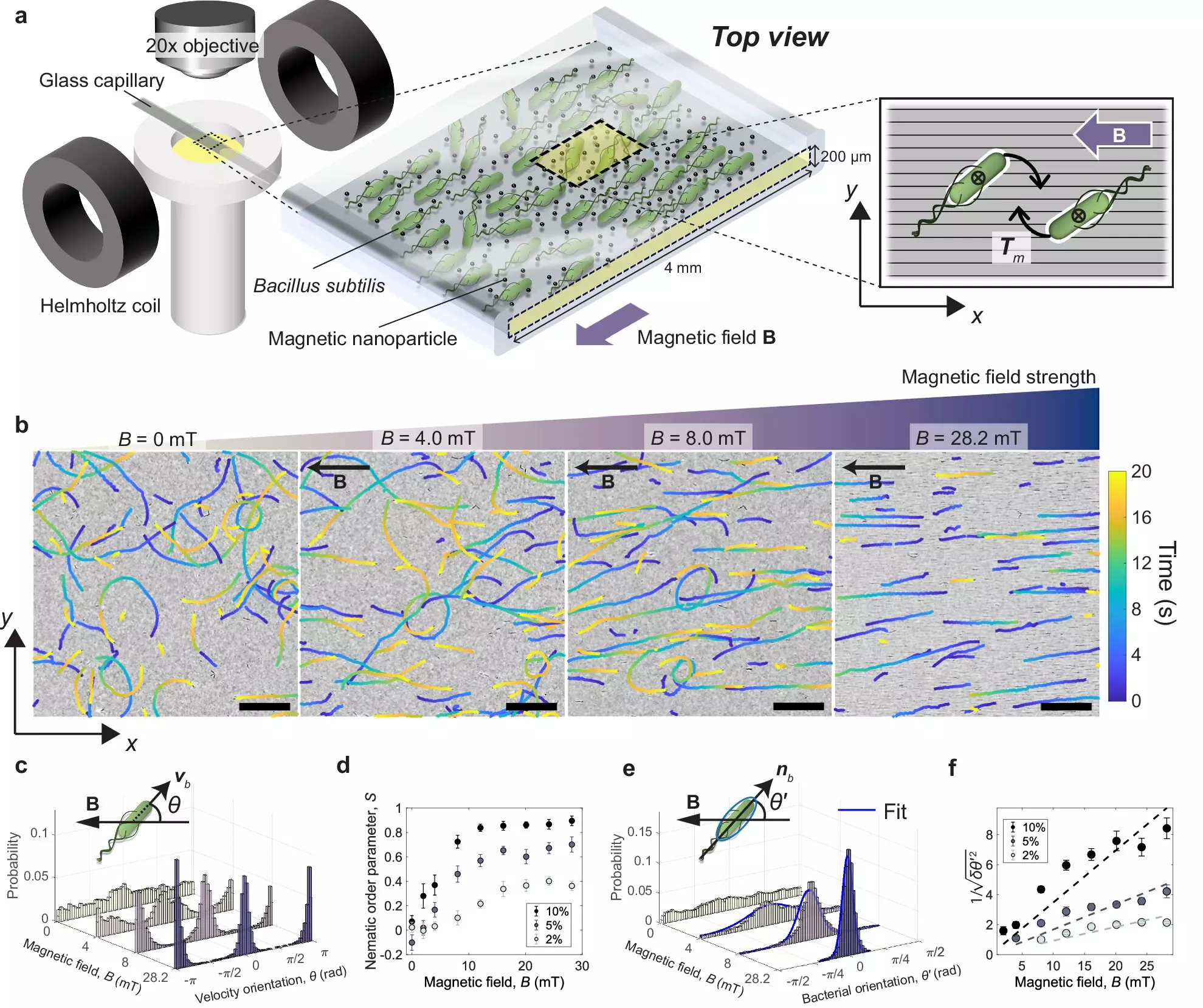Researchers at Finland’s Aalto University have recently made a groundbreaking discovery in the field of microbiology by utilizing magnets to manipulate the movement of bacteria. This innovative approach not only allows for the alignment of bacteria but also opens up new possibilities for a wide range of studies, including complex materials, phase transitions, and condensed matter physics. The findings of this study, published in the journal Communications Physics, provide valuable insights into the control of bacterial behavior through magnetic fields.
In this study, the researchers used magnets to align bacteria as they swim by introducing millions of magnetic nanoparticles into a liquid medium containing rod-shaped bacteria. While the bacteria themselves are not magnetic, the magnetic nanoparticles create a magnetic field that influences the alignment of the bacteria. When the magnets are activated, the bacteria are prompted to align with the magnetic field as it minimizes energy expenditure compared to other arrangements. This unique method allows for the precise control of bacterial movement without the need for direct interaction with the bacteria.
The strength of the magnetic field plays a crucial role in determining the alignment of the bacteria. When the magnets are turned off, the bacteria exhibit random swimming behavior. However, as the magnetic field strength is increased, the bacteria gradually align themselves, eventually forming near-perfect rows. Additionally, the density of the bacterial population also affects the alignment process, with higher densities requiring stronger magnetic fields to overcome the turbulence-like effects induced by the swimming bacteria. This phenomenon, known as active turbulence, is a key area of research in active matter physics and provides further insights into the behavior of collective systems.
The ability to control bacterial movement through magnetic fields has significant implications for various research fields, particularly in the study of active matter. By understanding and manipulating the behavior of individual components within a system, researchers can create dynamic patterns and emergent behaviors in materials. This has applications in self-sustaining materials, microrobotics, biological engines, and targeted drug delivery on a microscopic scale. The versatility of this method allows for its application in a wide range of systems beyond bacteria, further advancing the study of active matter in experimental settings.
Moving forward, the researchers plan to explore the effects of dynamic magnetic fields on bacterial alignment. By introducing rotating magnetic fields, they aim to further manipulate the behavior of bacteria and study the resulting changes in movement patterns. This research has the potential to expand our understanding of bacterial behavior in response to external stimuli and could lead to new advancements in the field of microbiology.
The use of magnets to control bacterial movement represents a significant advancement in research and has far-reaching implications for various scientific disciplines. By harnessing the power of magnetic fields, researchers can unlock new possibilities in the study of active matter and pave the way for exciting developments in the field of microbiology. As we continue to explore the potential of this innovative approach, we are poised to gain valuable insights into the behavior of microscopic organisms and their interactions with the external environment.


Leave a Reply